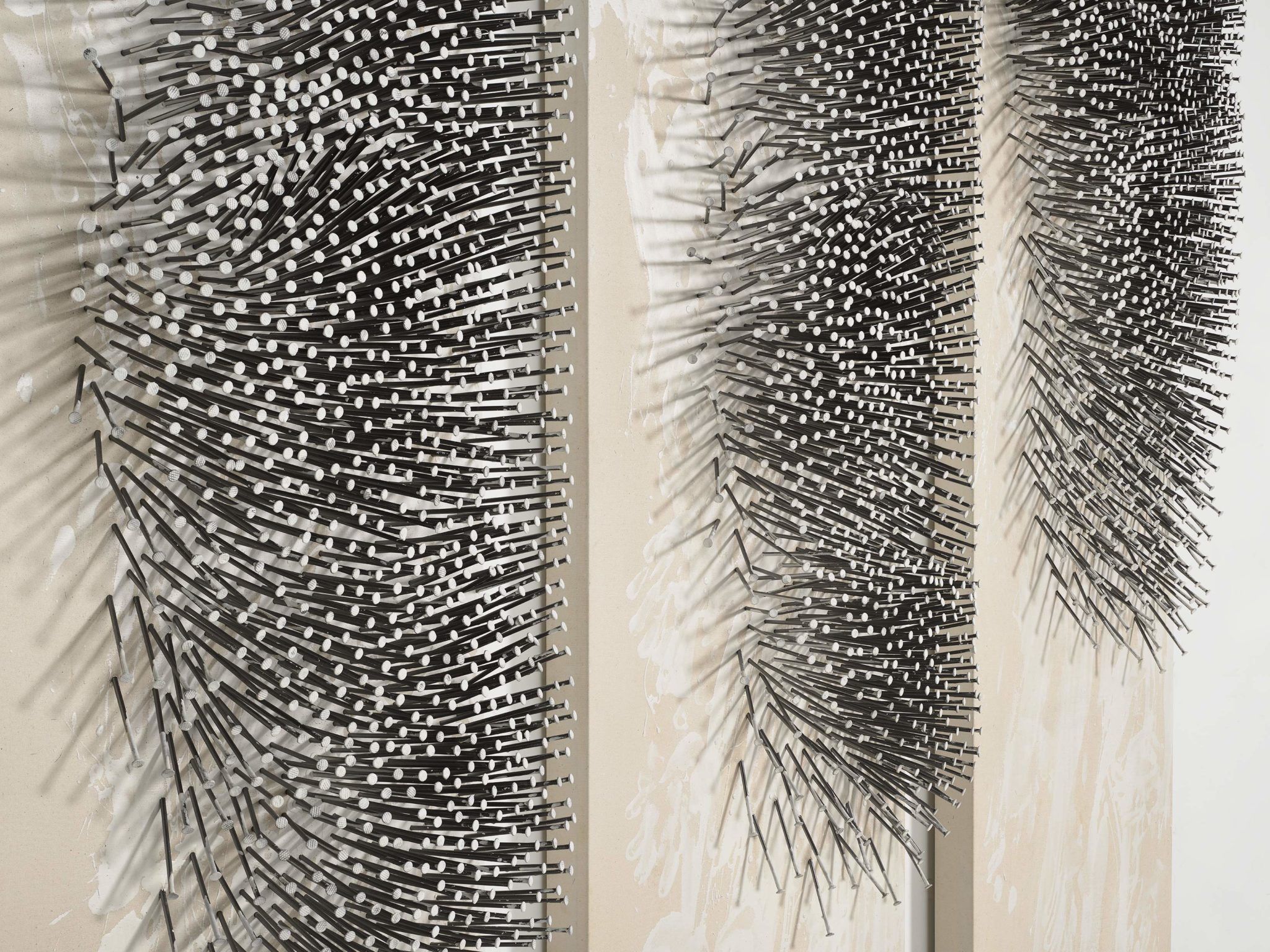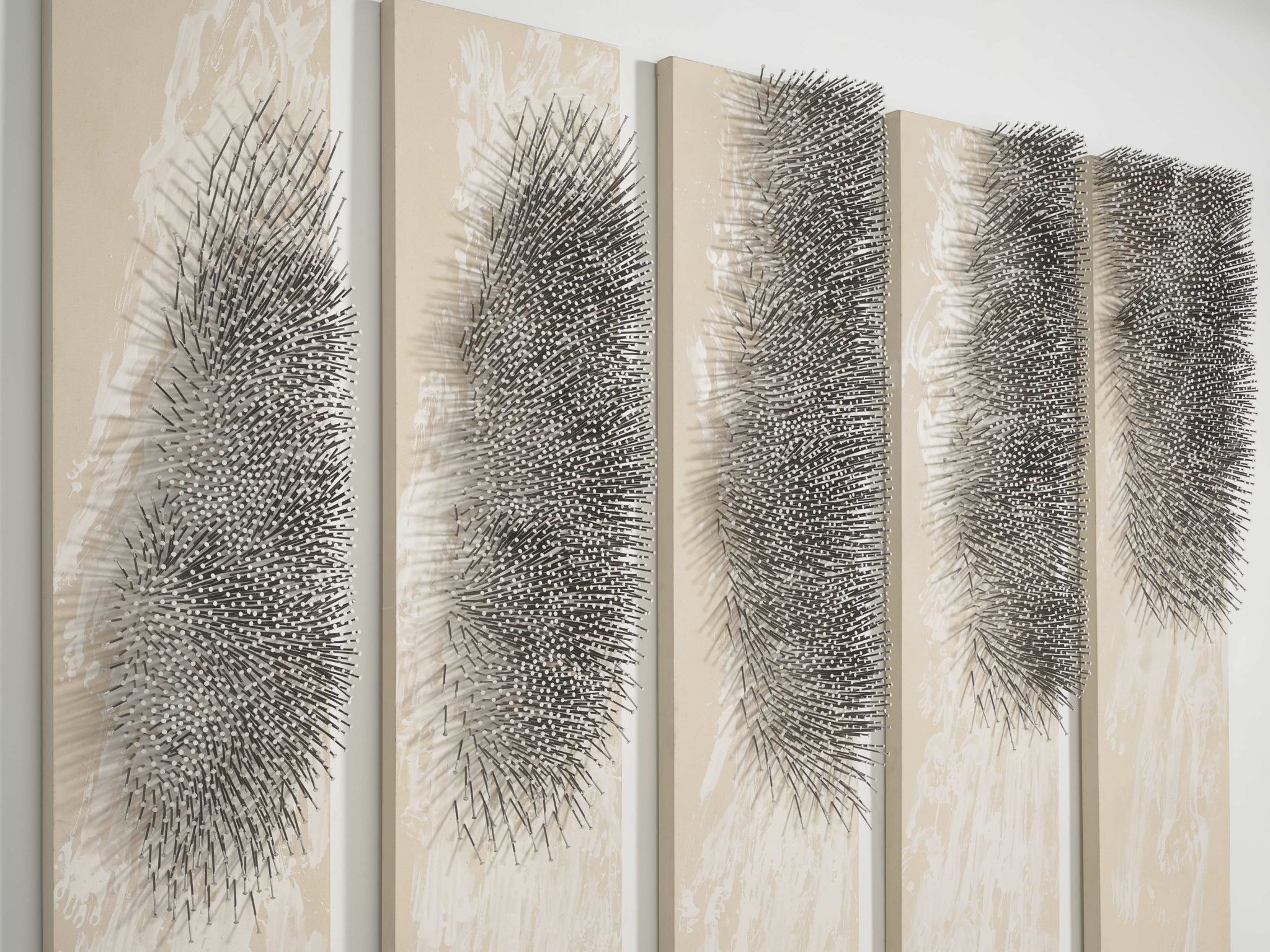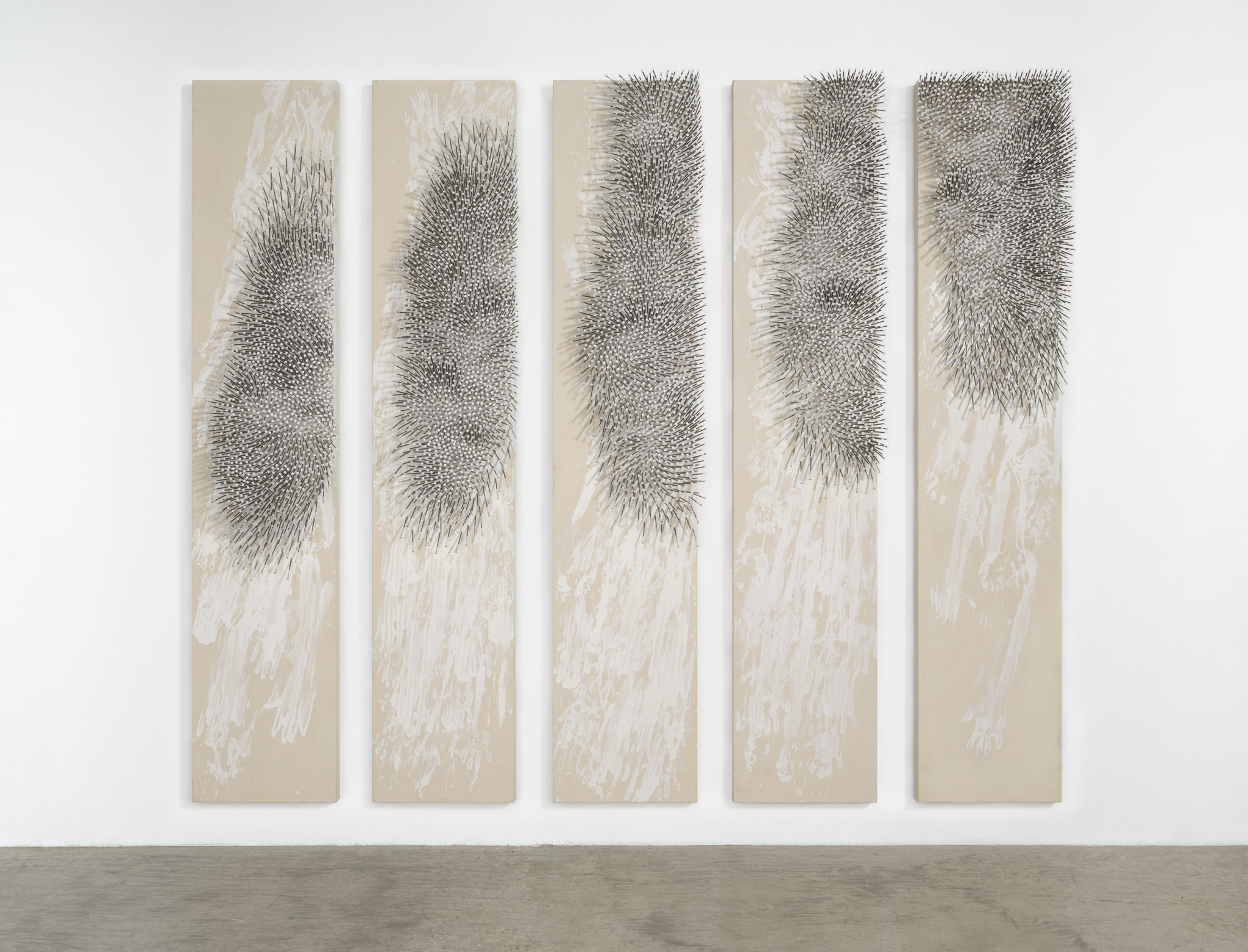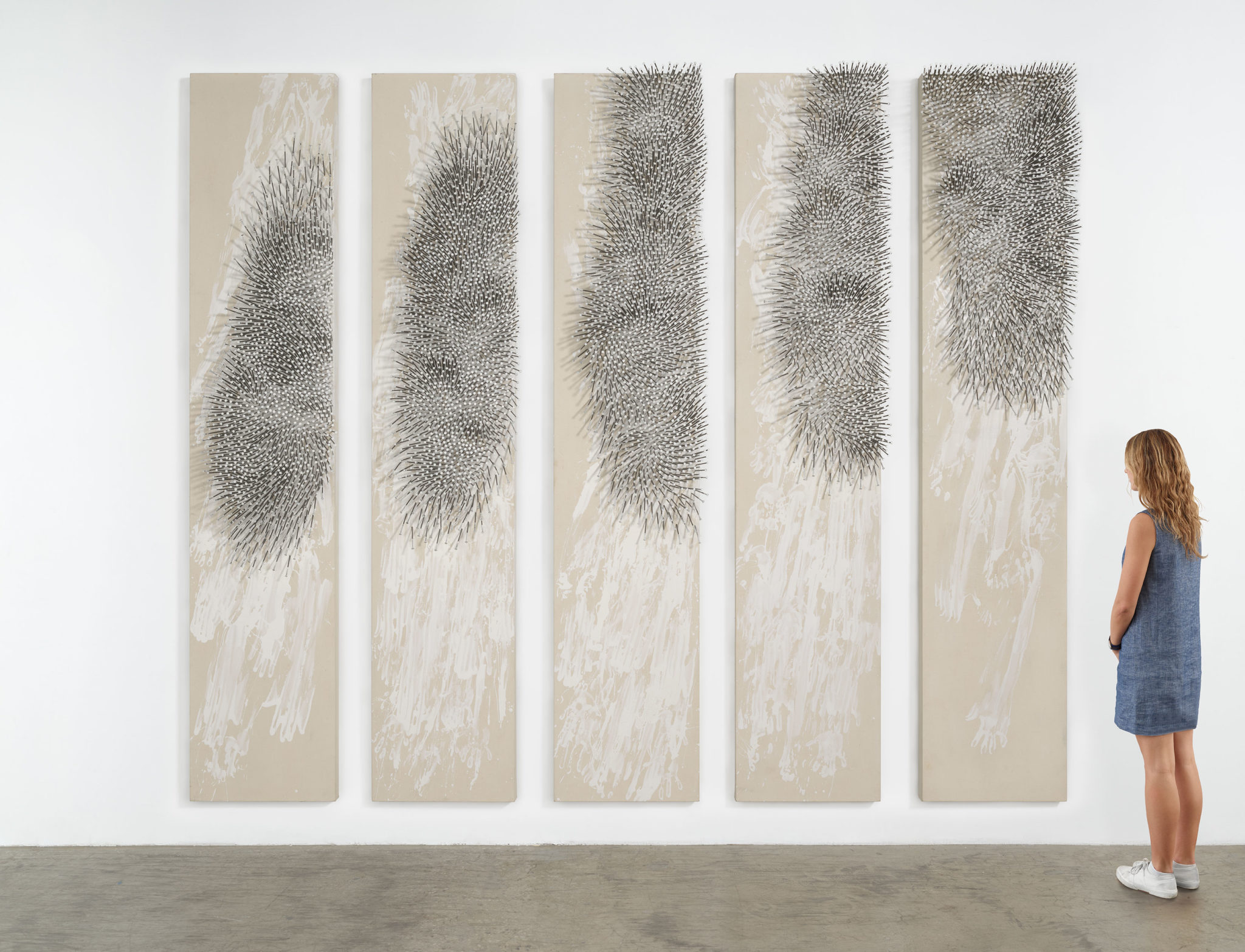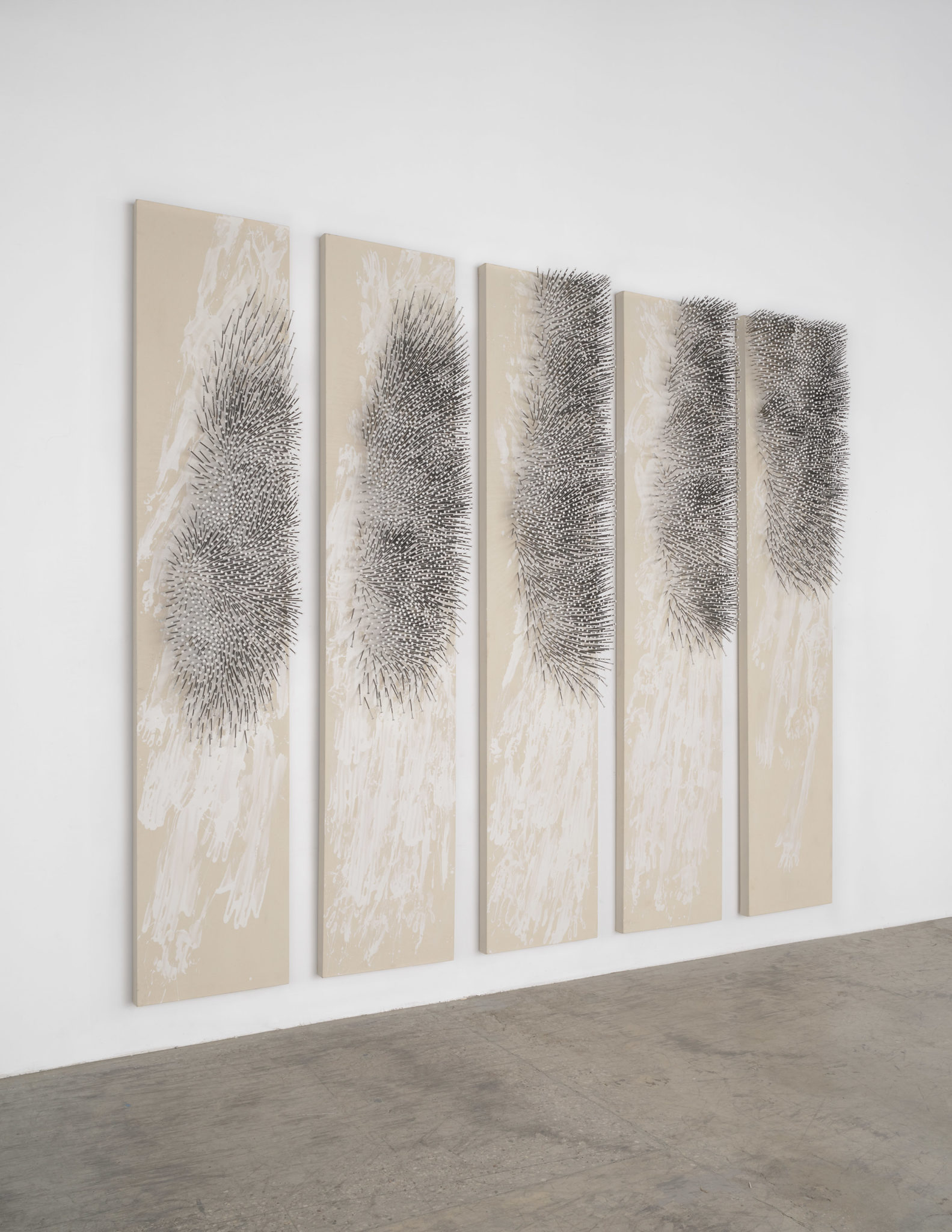Günther Uecker
Weisser Vogel, 2000
Paint and nails on canvas on board
Five panels, each: 118 ⅛ x 23 ⅝ inches (300 x 60 cm)
Overall: 118 1/8 x 141 ¾ inches (300 x 360 cm)
© Artists Rights Society (ARS), New York / VG Bild-Kunst, Bonn
Photo: Tom Powel Imaging
Holding the bundled nails in the left hand, selecting a nail with the right, which holds a hammer, setting it and hammering it in. Tensing and relaxing the shoulder muscles in a left-to-right motion, tensing the neck muscles when striking the blow. . . The perception of repetitions—thoughts are eradicated—a state of emptiness.
—Günther Uecker, 1969
In 1957, Günther Uecker made his first relief using nails. The nail would quickly become his signature material, inspiring the evolution of an extensive body of work that art historian Dieter Honisch has termed “Structured Fields.” Uecker’s steady, sonorous operation of hammering nails into a support prompts meditation in the artist and viewer alike, in the same vein as a mantra or prayer. Yet Uecker’s process can also yield frenzy—indeed, he is known for his fluid, at times feverish, mode of making. Each field lends the impression of having been created in a single burst of action fueled by tremendous physical effort, whose effects are ingrained upon its surface. Manifesting the violence that marks their making, Uecker’s reliefs figure creation as a relentless attack, speaking to existential pain that defines human experience.
Weisser Vogel (White Bird) was created in 2000, a moment of the artist’s career when he directly channeled his experiences of the world into his white reliefs; other works from this period explicitly reflect global religious and political tensions. Most notably, Uecker completed a Reflection and Prayer Room for the reconstructed Reichstag in Berlin that offered a nondenominational space for meditation and contemplation.
Exhibited in 2000 at the Akira Ikeda Gallery in Taura, Japan, Weisser Vogel comprises five vertical canvases oriented to the dimensions of the human body. Each, a raw canvas stretched over panel board, features a sweeping arrangement of white gestural marks in white paint and a visually dynamic constellation of nails. As Uecker stated in 1966, he uses the nail “to model light and shadow—to make time visible.” Here, the nails transform each canvas into a perceptual arena for the fleeting effects of ambient light; but the shifting dynamics of the relief also evoke the ever-modulating contours of a flock of birds against the sky. This sequence of movements is emphasized by the inclination of the white marks, which reveal the index of the artist’s hands and arms, as though he pulled the paint itself from the bottom of the canvas to the top, stretching the material to the extent of his own wingspan. As with the five vertical panels that comprise the artist’s Reflection and Prayer Room at the Reichstag, the nails in Weisser Vogel traverse upward and outward across their white grounds and ascend towards the skies, conveying themes of ascent, hopefulness and spirituality. As such, it attests to the lyricism of labor that defines Uecker’s art, joining vulnerability and intensity in a tribute to the very uncertainty that grounds humanity in nature.

